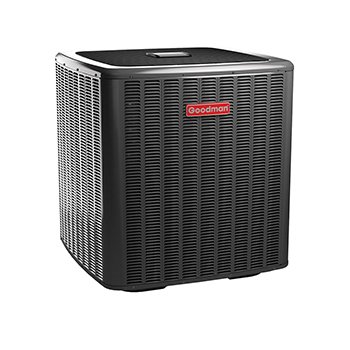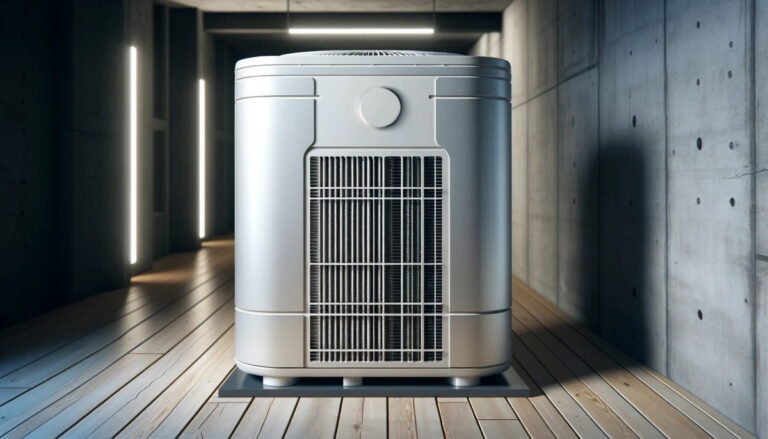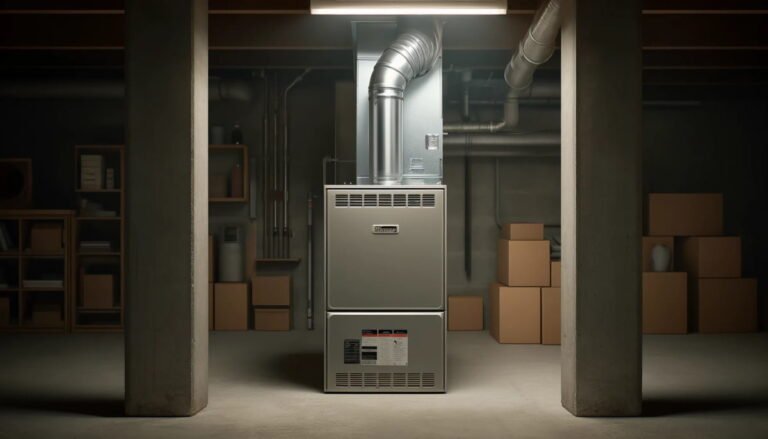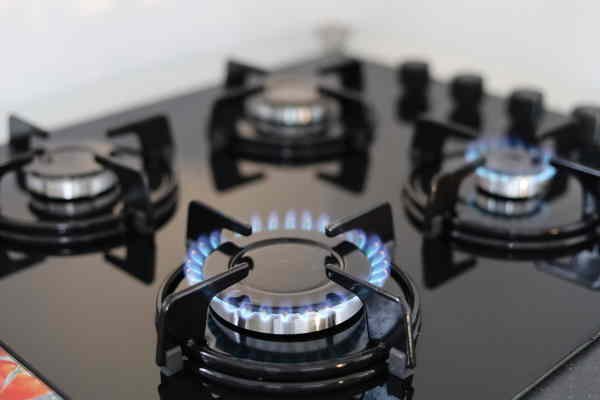What Are Geothermal Heat Pumps? Advantages and Important Considerations
In this comprehensive guide, we will answer the question, “What are geothermal heat pumps?” and also discuss the top benefits of these advanced HVAC systems, showcasing their potential for substantial energy savings and minimal environmental footprint.
Additionally, we’ll explore the various types of geothermal heat pumps and provide you with essential insights to consider before making an investment.
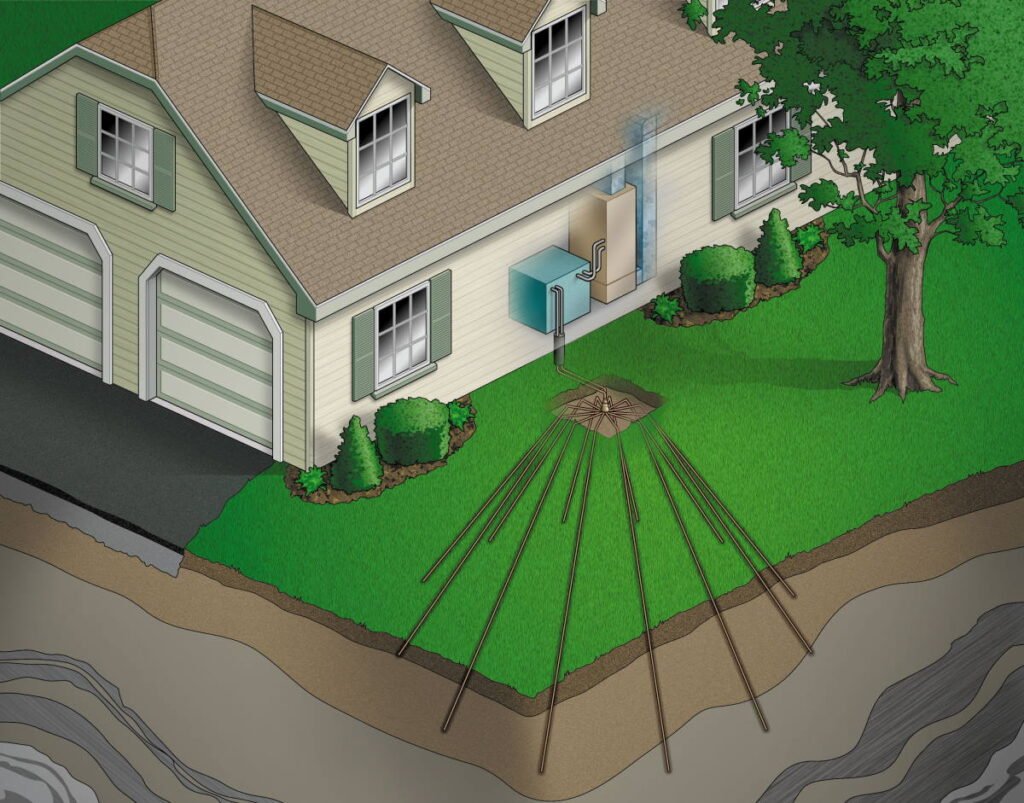
What is a Geothermal Heat Pump?
A geothermal heat pump, also known as a ground source heat pump, is a central heating and cooling system that transfers heat to or from the ground. It uses the earth as a heat source in the winter and a heat sink in the summer.
Unlike traditional systems that burn fuel (gas or oil) to create heat or use large amounts of electricity to cool spaces, geothermal heat pumps transfer heat to and from the ground using a series of pipes installed below the surface.
These systems consist of a heat pump located inside the home and a loop of pipes buried in the ground or a body of water.
How Geothermal Heat Pumps Work?
At its core, a geothermal heat pump operates on the same basic principle as a refrigerator or a conventional air-to-air heat pump, using a refrigerant to transfer heat.
However, instead of using the outside air, it exchanges heat with the ground (or water), which remains at a relatively constant temperature year-round, typically between 45°F and 75°F depending on the location. This consistency allows geothermal systems to operate more efficiently compared to air-source heat pumps.
Components of the System
- Heat Pump Unit: This is the indoor component that looks similar to a typical furnace. It contains the compressor, heat exchanger, and the controls of the system. The heat pump transfers heat between the building and the fluid in the earth loop.
- Ground Heat Exchanger: This is a system of pipes, often referred to as a loop, buried in the ground near the building. There are several types of loop systems including horizontal, vertical, and pond types.
- Refrigerant Loop: Inside the heat pump unit, the refrigerant absorbs or dissipates heat as it moves through the system depending on the mode of operation (heating or cooling).
- Distribution System: This can be a duct system for forced air or a network of pipes for hydronic systems, used to distribute warm or cool air or water throughout the building.
Heat Transfer Process
In the winter, the geothermal heat pump extracts heat from the ground through the water or refrigerant circulating in the underground loop. The heat absorbed by the fluid is then transferred to the indoor heat pump unit. The heat pump’s compressor increases the temperature of the heat, which is then transferred to the air or water in the home’s distribution system.
In the summer, the process reverses. The indoor heat is absorbed by the system’s heat pump and transferred to the fluid in the loops, which is then cooled by the lower temperatures in the ground. The cooled fluid is sent back into the house to maintain a cooler indoor environment.
Types
Geothermal heat pumps come in various types, each suited to different ground conditions and spatial requirements.
Horizontal and vertical closed loop systems are the most common for residential use.
Horizontal systems are often preferred for their cost-effectiveness and simpler installation process. They require a significant amount of land as the loop system is laid out flat at a depth of about four to six feet. This system is ideal where land is ample and the soil conditions allow easy excavation.
In contrast, vertical systems are used primarily where space is limited, such as in urban areas or small residential lots. These systems involve drilling deep holes, typically ranging from 100 to 400 feet deep, into which the pipe loops are inserted vertically.
This method minimizes the land surface disturbed and is excellent for avoiding the frost line in colder climates.
Two less common but equally viable options are pond (spiral) systems and open loop systems.
Pond systems use a coil of pipe, usually in a spiral shape, submerged in a nearby pond, lake, or even a man-made body of water. This method is cost-effective if a suitable water body is available, as it uses the stable temperatures of the body of water to heat or cool the fluid in the pipes.
On the other hand, open loop systems, sometimes known as well systems, operate by directly using groundwater. Water is drawn from an aquifer through a supply well, passes through the heat pump system where heat exchange occurs, and is then discharged back into the ground through a return well or into a drainage ditch. This type of system is highly efficient but requires abundant clean groundwater and permissible local regulations regarding water use.
DX systems utilize a direct expansion refrigerant loop to transfer heat between the building and the ground. Unlike traditional geothermal systems that use a water-based loop, DX systems circulate refrigerant directly through the ground loop, allowing for more efficient heat exchange.
This technology offers increased heating and cooling efficiency, making DX geothermal heat pumps a popular choice for residential and commercial applications seeking sustainable HVAC solutions.
Advantages of Geothermal Heat Pumps
Energy Efficiency
Geothermal heat pumps are among the most energy-efficient HVAC options available, achieving 300-600% efficiency. In comparison, air-source heat pumps typically reach 175-250% efficiency.
Additionally, these systems heat up to 70% more effectively than other HVAC systems and cool about 40-50% more effectively than regular air conditioners.
The Department of Energy highly rates these systems for their efficiency. Because they utilize the stable temperatures underground, less energy is required to heat or cool spaces, significantly reducing energy use.
Cost-Effectiveness
Despite higher initial installation costs, geothermal systems lead to lower operating costs over time.
Homeowners can expect to save up to 70% on heating and up to 40-50% on cooling costs compared to conventional systems. They rely solely on the stable underground temperatures and only require electricity to run the pump, which can significantly reduce utility bills.
Additionally, these systems can serve dual purposes by heating water or helping preheat water tanks, thus saving further on energy costs.
Environmental Benefits
Geothermal heat pumps do not produce pollutants nor do they rely on fossil fuels, making them environmentally friendly. They reduce greenhouse gas emissions, equivalent to taking two cars off the road or planting over 700 trees.
Durability and Low Maintenance
With fewer moving parts than conventional HVAC systems, geothermal heat pumps require less maintenance. The indoor components may last up to 25 years, and the underground loop can last over 50 years. They operate quietly without the noisy outdoor compressors typical of other systems, featuring only a quiet indoor fan.
Safety and Comfort
Unlike gas furnaces, geothermal systems have no open flames or pilot lights, eliminating risks such as carbon monoxide poisoning, gas and fumes leak, and explosions. They provide even heating and cooling throughout the house, avoiding the uneven temperatures common with other systems.
Disadvantages of Geothermal Heat Pumps
High Initial Cost
The upfront cost for a geothermal heat pump system can be significant, typically ranging from $10,000 to $20,000, or more. This cost is mainly due to the need to install the underground loop system.
Site-Specific Requirements
Installation can be disruptive and is highly dependent on having suitable land or a nearby water source for the loops. Urban areas or properties with small yards may face challenges with vertical drilling, which can be more expensive and complex.
Water Quality Issues
For open loop systems, water quality can impact system performance and maintenance needs. Poor quality water may lead to scaling, corrosion, or other issues within the heat pump.
Regulatory and Permitting Issues
Installation often requires navigating complex local regulations and obtaining permits, especially for open loop systems that involve water discharge.
Things to Consider
When considering the installation of a geothermal heat pump system, it’s important to evaluate several factors to ensure you select the most suitable system for your property and needs.
Here are some practical tips for selecting the right type:
Assess the Property Size and Soil Conditions
Horizontal systems require a larger land area to accommodate the extensive loop systems laid out horizontally. Good soil conductivity enhances efficiency, so soil testing can be a crucial preliminary step.
If your property is limited in size, a vertical system might be more appropriate. This option requires drilling deep into the ground, so understanding the geological features of your property is essential.
Determine the Type of System
Choose a closed-loop system if you have limited water resources or if local regulations restrict water usage. Open loop systems are feasible if you have abundant clean groundwater, but they require permits for water discharge.
If you have access to a pond or lake, a pond loop system can be a cost-effective option. Ensure the water body is deep enough to prevent freezing in winter.
Consider Local Climate and Energy Needs
Evaluate the heating and cooling demands based on your local climate. Geothermal heat pumps are highly efficient in both hot and cold climates, but the sizing and type of system may vary based on your specific environmental conditions.
Consider any additional features such as the capability to pre-heat domestic hot water, which can provide further energy savings.
Look for Quality and Durability
Opt for systems that have high ratings and good reviews for durability and reliability. Check the lifespan of both the indoor and the loop components.
Choose a reputable brand that guarantees their system components for at least several decades, especially the underground pipes.
Review Installation Expertise and Support
Select a contractor with proven experience in installing geothermal systems. Expert installation is crucial to the efficient operation and longevity of the system.
Ensure the installer conducts a thorough site assessment and uses proper techniques for installing the loop system to avoid future problems.
Evaluate Costs and Incentives
Understand the total cost of installation including drilling or excavation, equipment, and any landscape restoration required.
Look into local, state, or federal incentives or rebates that may be available for geothermal systems, as these can significantly offset the initial investment.
Conclusion
As we can see from the above text, geothermal heat pumps are indeed worth the investment for many homeowners. These systems provide substantial energy efficiency and significant environmental benefits compared to traditional HVAC systems.
Although the upfront costs are higher, the long-term savings on utility bills, coupled with minimal maintenance requirements, ensure that these costs can be recouped over time. Given their ability to adapt to different property sizes and climates, along with potential government incentives, geothermal heat pumps represent a smart, sustainable investment that enhances home comfort and reduces carbon footprints.
More About Heat Pumps
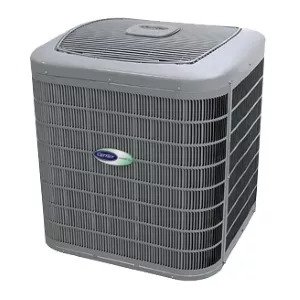
Heat Pump Not Cooling? Here’s What You Need to Know
Heat pumps are essential not only in the winter for heating our homes but also in the summer to cool…

Compare Ductless Mini-Split Heat Pumps vs. Window Heat Pumps: Which Is Right for You?
In this article, we are going to look at ductless mini-split heat pumps vs. window heat pumps, examine how each…

Explore the Differences: How Ductless vs. Ducted Heat Pumps Compare
Deciding between ductless vs. ducted heat pumps is as easy as planning a holiday. You know it’s going to cost…

